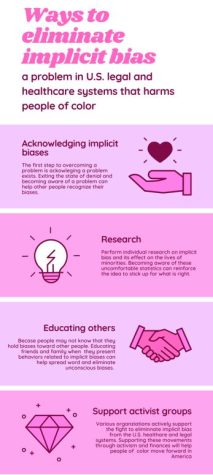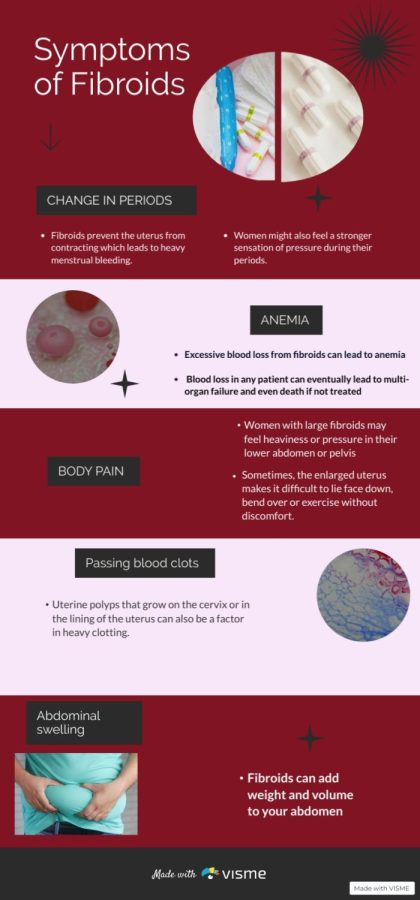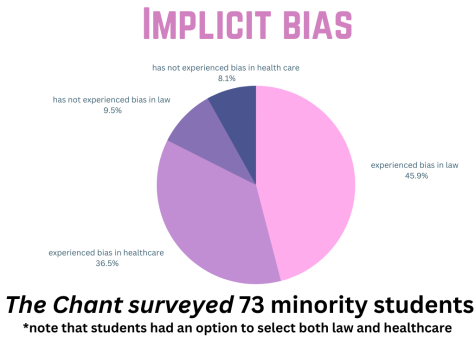The bias plaguing America’s health and legal systems
May 22, 2023
America: a country that garners the title of the land of the free and prides itself on its equality, liberty and justice for all. People endure hardships, travel to great lengths and work diligently to live in the United States. When they arrive, however, they face unfair treatment within American systems. Moreover, even people of color born in this nation live in a relentless nightmare, because they know that professionals and systems obligated to protect them hold unconscious biases that pose substantial threats. Black and Latino people living in the United States must spend their lives in fear of the systems obliged to serve the public: the healthcare system and the criminal justice system.
As the United States began its third year of the Civil War in 1863, President Abraham Lincoln passed the Emancipation Proclamation. This order required all slave owners to release their slaves, which supposedly allowed enslaved people to live freely. Regardless, formerly enslaved Black people, immigrants, Native Americans and other minorities suffered mass incarceration. In fact, from 1850—only 13 years before the Emancipation Proclamation— to 1940, minorities occupied nearly 50% of the prison population. The percentage of incarcerated people of color has continued to increase; In 2015, nearly 55% of the prison population included people from Black or Latino communities.
Studies have revealed that even with similar criminal histories and charges, Black individuals encounter incarceration five times more than their white counterparts. Hispanic individuals face a similar fate with a three times higher incarceration rate than white people. These high incarceration rates from minority communities result from various problems with a common root: unconscious biases.
As supported by the United States Sentencing Commission, Black men receive harsher and longer sentences for the same crimes that white men commit. This 19.1% sentencing difference stems from racial bias in the courtroom. Implicit biases from judges, juries and prosecutors affect the outcomes of sentencing times and bond amounts for Black individuals.
Despite Black households earning 7.8 times less than white households, Black men receive bond amounts that stand 35% higher than a white man’s for a similar crime— and for Latino men, judges set the bond amounts 19% higher. These excessive bond amounts can pose financial difficulties for the average Black and Latino families given that they earn less on average.
“Though I don’t think this [will] ever happen, I was always the person saying that being released on bond shouldn’t even be a thing. It feels like a war on poor people. Obviously, if you think someone should be released on bond, they won’t be a danger. So why do they need to pay money? It never made sense to me and it just seems like another way to target people with less money. Not everyone has enough money to pay for crazy bond amounts like 20[,000 thousand dollars] or 40[,000 dollars],” junior James Nelson said.
Proposing and implementing implicit bias training into legal systems can help eliminate the disparity gap between Black and Latino individuals. Organizations such as the National Association for the Advancement of Colored People (NAACP) currently urge law schools, judiciary systems and the U.S. Department of Justice to conduct implicit bias training yearly to protect the lives of people of color and reduce the inequality gap in the criminal justice system. With the help of interactive exercises, workshops and online courses, prosecutors, judges and other legal figures can overcome unconscious biases. Though a person may not realize his or her bias, the bias he or she holds can negatively impact the lives of others.

Due to their implicit biases, healthcare professionals also risk the lives of Black and Latino individuals around the nation. Researchers from the Journal of Minimally Invasive Gynecology have revealed the disparities that Black and Latina women endure in the spectrum of gynecologic health. Obstetricians and doctors in gynecology recommend minimally invasive procedures that treat uterine fibroids— growths on the uterus that disproportionately affect Black women— more frequently than White women than Black and Hispanic women. Moreover, the study revealed that the Black and Hispanic women who received hysterectomies obtained less qualified doctors in the area of minimally-invasive healthcare than the doctors of White women.
“It is possible that implicit bias could be impacting referral patterns or the way gynecologic surgeons counsel women on surgical options. It is also possible that there are disparities in patient awareness about the availability of minimally invasive gynecologic surgery for fibroid treatment. Educating both practicing gynecologists and patients in the community about the value and availability of minimally invasive procedures is one important step we can take now to address these racial disparities,” obstetrician Rebecca Schneyer, MD said.
Moreover, recent efforts to overturn the court case Roe v. Wade has caused fear and worry in Black communities. In 1973, the U.S. Supreme Court ruled that the right to an abortion falls into the hands of the individual, and the government cannot interfere with a woman’s constitutional right to an abortion. Despite this, officials such as Georgia Governor Brian Kemp and Florida Governor Ron DeSantis have expressed opposition to abortion. Given that Black women hold three times higher chances of dying due to pregnancy-related causes than White women, the proposition of overturning a fundamental case appears as a way to target Black communities.
“Immediately when I saw people talk about overturning Roe V. Wade I knew it was going to affect Black women and poor women. Poor women cant travel far if their state bans it and Black women usually have to abort their children if they have complications. The abortion laws hurt Black women who need abortions,” junior Nyla James said.
The fear that Black women face in healthcare does not merely end at the overturning of court cases such as Roe v. Wade but further progresses with the implicit bias in exam rooms. The American Medical Association revealed that medical physicians hold implicit biases toward Black and Latino individuals about their supposed chances of drug addiction. Despite these communities reporting higher levels of pain and lower pain thresholds, doctors provide them with lower doses of pain medication if prescribing any pain medicine at all.

Similar to efforts to reform the criminal justice system through unconscious bias training, America should require medical schools, hospitals and other health-related centers to participate in implicit bias training as well. The healthcare system should ensure that all medical professionals maintain their oath to do no harm. While those obligated to protect humanity may not realize the harm they cause, Black and Latino communities recognize and unfortunately endure the results of implicit bias.
American systems should implement implicit bias training to preserve its notion of freedom for all people regardless of color or race. Halting these biases at their roots in law and medical schools while maintaining yearly training in their careers can help preserve Black and Latino communities. Though the country will need to work further to eliminate the disparity, implicit bias training will positively impact minority communities and will help America take one more step forward to maintain its status as the land of the free.

